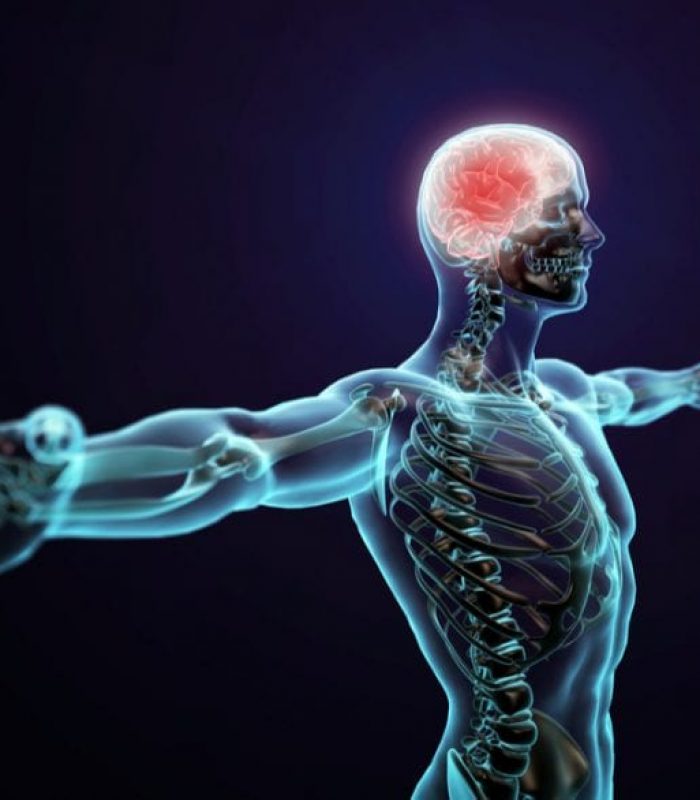CB1 receptors must be placed exactly in their spots in the brain or nerve transmission problems can start.
Cannabis medicine is experiencing a renaissance of research. From the incredible variety of hemp research underway, to focus on cannabis as an addition to cancer treatment, there has never been so much research underway. Here’s a topic you might not think of right away, however – the placement of CB1 receptors in the brain.
One of the most abundant G-protein coupled receptors in the central nervous system (CNS) is the CB1 receptor. These are important parts of the endocannabinoid system, responsible for modulating pain, appetite, mood, and affecting memory. This receptor is also associated with multiple neurodegenerative disorders and has become a subject of intense interest in research circles.
How Nerve Cells Communicate With Each Other
The brain contains about 100 billion neurons that are in constant communication with each other. A cell body, an axon, and dendrites make up the nerve cell. The latter two are responsible for communicating from nerve cell to nerve cell.

Exchange of the information occurs at contact points called the synapses. To send a message, a neuron releases a chemical (neurotransmitter) from its axon terminals to the synapses. The neurotransmitter crosses the synapse and bind the receptor proteins on dendrites of another neuron, passing the message along.
The Role of the CB1 Receptor in Nerve Cell Communication
CB1 receptors help control the flow of information at the synapses. They do this by binding neurotransmitters called endocannabinoids. These are unusual among neurotransmitters because, instead of sending the message from axons to dendrites, endocannabinoids send them in the opposite direction. Therefore, it is the dendrites that release the endocannabinoids, which then bind to the CB1 receptor on the axon terminals. This backwards, or “retrograde” signaling dampens the release of the other neurotransmitters. And this action slows down the brain activity and contributes to the “mellow” feeling often described by the presence of THC.
Study Shows Behavior of Newly Made CB1 Receptors in the Brain
In this study, the researchers investigated how the polarity on the surface of the axon affects CB1 receptor. Polarity means that an object or structure has two opposite ends, like magnets. Have you ever tried to stick two south poles together? These are repelled because they have the same polarity. Researchers investigated the polarity of the axon by tracking newly made CB1 receptors as they moved out of the cell.
CB1 receptors have a highly polarized axonal surface that acts to weaken neurotransmitter release and modulate synaptic plasticity. Two mechanisms control this process: selective delivery of the newly made CB1 receptor to the axon (also preventing delivery to the dendrites) and maintaining presence in axons and retrieval from dendrites.

CB1 Receptors Directed to Proper Spot on Nerve Cell in the Brain
A specific component, called C-terminal motif Helix 9 (H9), plays a significant role in getting the CB1 receptor to where it needs to be. The study found that deletion of H9 leads to the mistakes in the delivery of CB1 receptors to the axon and reduced ability of both axon and dendrites to keep CB1 receptors in place. This may have significant impact for the pathology of neurodegenerative disease.
The cell builds CB1 receptors inside itself, much like other proteins. So, the question becomes, how do these receptors end up on the axon terminal where they are needed? Researchers, Fletcher-Jones et al., have tried to answer this question by growing the rat neuron in a petri dish. They discovered that the receptors go directly to the axon, before moving onto the axon terminals.
Basically, a specific region of the CB1 receptor is important for sending the receptors to the axon. This same spot makes sure that these don’t head toward the dendrite instead. It also holds CB1 receptors at the axon surface and helps to make these available for binding endocannabinoids.
CB1 is an Important Target For Medicine
The CB1 receptor is responsive to the cannabinoids found in cannabis. Activating these can treat a wide range of the diseases and conditions, including: chronic pain, epilepsy and multiple sclerosis. Future studies should build on the understanding of CB1 receptors to explore and develop new therapies.
Finally, given the increased interest in the CB1 receptor as a clinical target, understanding the basic cell biology and trafficking behavior of this receptor is an increasingly active and important area of research.
To summarize the results of the study: H9 plays an important role in trafficking CB1 receptors to the proper spot in the nerve cell. This finding provides an important insight into the mechanism of CB1 receptor polarity and highlights H9 as an important regulator.





